The ringed asteroid
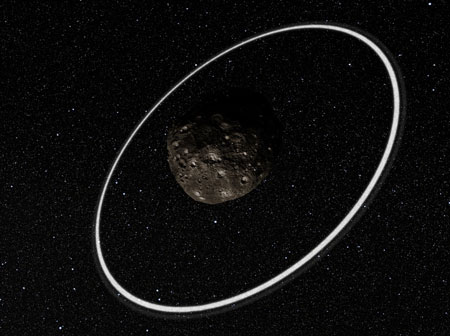 Two thin rings made of ice surround the asteroid Chariklo.
Two thin rings made of ice surround the asteroid Chariklo.
Mar 27th, 2014
Read more
 Subscribe to our Space Exploration News feed
Subscribe to our Space Exploration News feed
 Two thin rings made of ice surround the asteroid Chariklo.
Two thin rings made of ice surround the asteroid Chariklo.
Mar 27th, 2014
Read more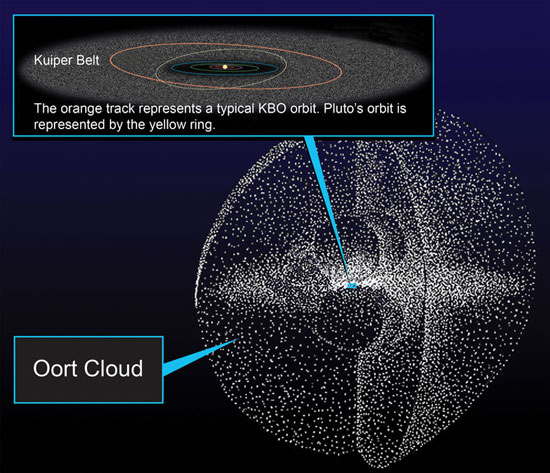 A new, planet-like body has been found on the outer edges of the solar system. This object is the second body of its class found since the identification of the dwarf planet Sedna in 2003. It joins an exclusive club composed of some of the strangest objects in the solar system.
A new, planet-like body has been found on the outer edges of the solar system. This object is the second body of its class found since the identification of the dwarf planet Sedna in 2003. It joins an exclusive club composed of some of the strangest objects in the solar system.
Mar 26th, 2014
Read more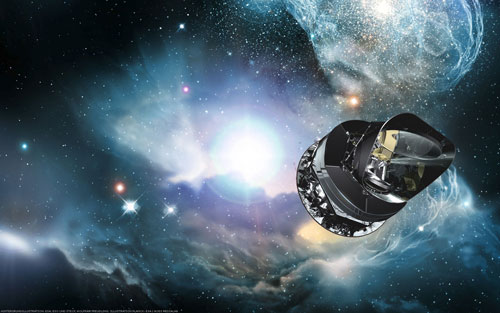 Quintessence and phantom fields, two hypotheses formulated using data from satellites, such as Planck and WMAP, are among the many theories that try to explain the nature of dark energy. Now researchers suggest that both possibilities are only a mirage in the observations and it is the quantum vacuum which could be behind this energy that moves our universe.
Quintessence and phantom fields, two hypotheses formulated using data from satellites, such as Planck and WMAP, are among the many theories that try to explain the nature of dark energy. Now researchers suggest that both possibilities are only a mirage in the observations and it is the quantum vacuum which could be behind this energy that moves our universe.
Mar 26th, 2014
Read more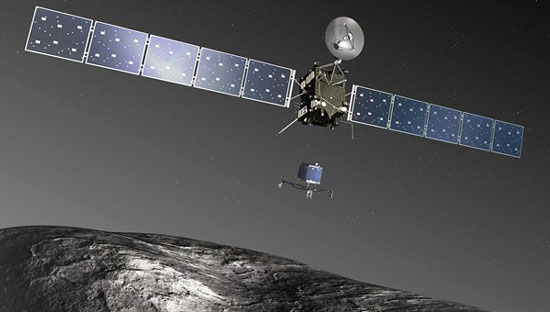 A rocket launch in March 2004, multiple swing-bys past Earth and Mars, high-speed fly-bys of asteroids Steins and Lutetia - after all this, the Philae lander on board ESA's Rosetta spacecraft, which is en route to Comet 67P/Churyumov-Gerasimenko, is in good shape.
A rocket launch in March 2004, multiple swing-bys past Earth and Mars, high-speed fly-bys of asteroids Steins and Lutetia - after all this, the Philae lander on board ESA's Rosetta spacecraft, which is en route to Comet 67P/Churyumov-Gerasimenko, is in good shape.
Mar 26th, 2014
Read more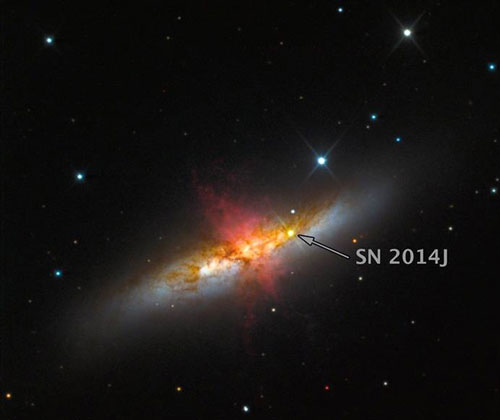 Researcher have intently studied the closest type Ia supernova discovered in a generation. The proximity to Earth could yield better understanding of this particular type of supernova that astronomers use to gauge distances in the universe and learn about its expansion history.
Researcher have intently studied the closest type Ia supernova discovered in a generation. The proximity to Earth could yield better understanding of this particular type of supernova that astronomers use to gauge distances in the universe and learn about its expansion history.
Mar 25th, 2014
Read moreF-type stars, more massive and hotter than our sun, warrant more consideration as spots to look for habitable planets, according to a newly published study that also examined potential damage to DNA from UV radiation.
Mar 25th, 2014
Read more Researchers in Spain have designed a vacuum chamber capable of mimicking conditions on Mars to test gear for use in future missions.
Researchers in Spain have designed a vacuum chamber capable of mimicking conditions on Mars to test gear for use in future missions.
Mar 25th, 2014
Read more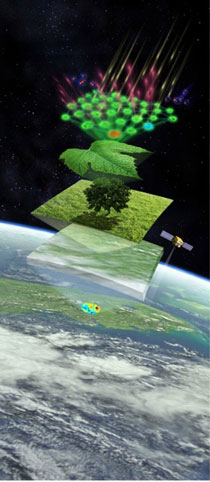 New research reveals a fundamentally new approach for measuring photosynthetic activity as it occurs around the planet.
New research reveals a fundamentally new approach for measuring photosynthetic activity as it occurs around the planet.
Mar 25th, 2014
Read more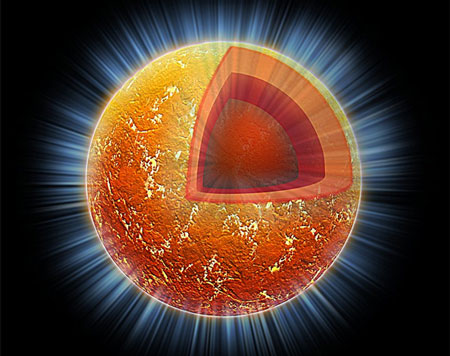 New research demonstrates that in certain respects these stars can instead be described very simply and that they show similarities with black holes.
New research demonstrates that in certain respects these stars can instead be described very simply and that they show similarities with black holes.
Mar 25th, 2014
Read moreRecently physicists have been poking holes again in Stephen Hawking's black hole theory - including Hawking himself. Now professor Chris Adami, Michigan State University, has jumped into the fray. He believes he has solved the decades-old information paradox debate in a groundbreaking new study.
Mar 24th, 2014
Read more Scientists used a simulation model that is far more accurate than previously used, and carried out an experiment to test a hypothesis about the behaviour of hydrogen that is splitting the scientific community.
Scientists used a simulation model that is far more accurate than previously used, and carried out an experiment to test a hypothesis about the behaviour of hydrogen that is splitting the scientific community.
Mar 24th, 2014
Read more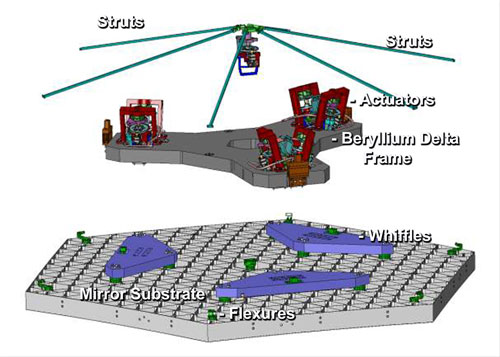 New technology created Webb mirrors.
New technology created Webb mirrors.
Mar 20th, 2014
Read more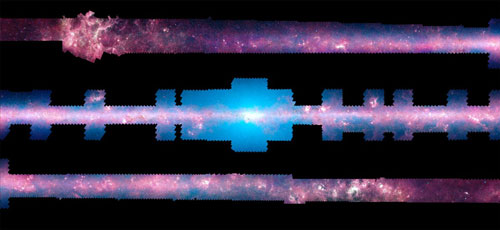 Touring the Milky Way now is as easy as clicking a button with NASA's new zoomable, 360-degree mosaic presented Thursday at the TEDActive 2014 Conference in Vancouver, Canada.
Touring the Milky Way now is as easy as clicking a button with NASA's new zoomable, 360-degree mosaic presented Thursday at the TEDActive 2014 Conference in Vancouver, Canada.
Mar 20th, 2014
Read more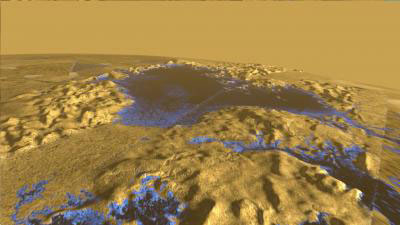 Using radar measurements gathered by NASA's Cassini spacecraft, geophysicists have concluded that the surface of Ligeia Mare, Titan's second largest sea, has a mirror-like smoothness, possibly due to a lack of winds. As the only other solar system body with an Earth-like weather system, Titan could serve as a model for studying our own planet's early history.
Using radar measurements gathered by NASA's Cassini spacecraft, geophysicists have concluded that the surface of Ligeia Mare, Titan's second largest sea, has a mirror-like smoothness, possibly due to a lack of winds. As the only other solar system body with an Earth-like weather system, Titan could serve as a model for studying our own planet's early history.
Mar 20th, 2014
Read more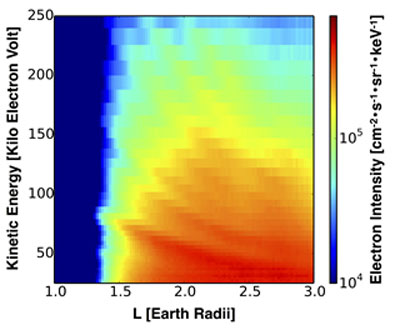 Scientists have discovered a new, persistent structure in Earth's inner radiation belt using data from the twin NASA Van Allen Probes spacecraft. Most surprisingly, this structure is produced by the slow rotation of Earth, previously considered incapable of affecting the motion of radiation belt particles, which have velocities approaching the speed of light.
Scientists have discovered a new, persistent structure in Earth's inner radiation belt using data from the twin NASA Van Allen Probes spacecraft. Most surprisingly, this structure is produced by the slow rotation of Earth, previously considered incapable of affecting the motion of radiation belt particles, which have velocities approaching the speed of light.
Mar 19th, 2014
Read more The U.S. Department of Energy's Joint Center for Energy Storage Research (JCESR) and NASA Glenn Research Center are collaborating to develop next-generation batteries for use in future space missions.
The U.S. Department of Energy's Joint Center for Energy Storage Research (JCESR) and NASA Glenn Research Center are collaborating to develop next-generation batteries for use in future space missions.
Mar 19th, 2014
Read more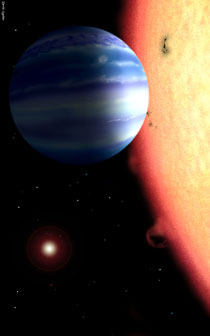 Researchers have detected water vapor in the atmosphere of a planet outside our solar system. The team applied a sophisticated Doppler technique to the infrared to directly detect the planet and demonstrate the presence of water in its atmosphere.
Researchers have detected water vapor in the atmosphere of a planet outside our solar system. The team applied a sophisticated Doppler technique to the infrared to directly detect the planet and demonstrate the presence of water in its atmosphere.
Mar 19th, 2014
Read more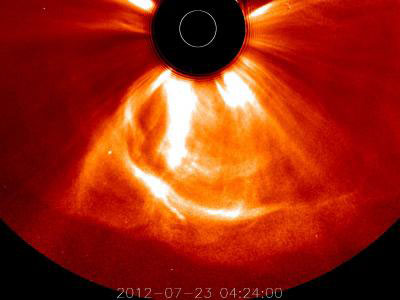 On July 23, 2012, a huge magnetic storm propelled by two nearly simultaneous coronal mass ejections on the sun plowed through Earth's orbit. Luckily, Earth was on the other side of the sun at the time. Had the outburst hit Earth, however, it would have rivaled the largest magnetic storm to strike Earth in recorded history, possibly wreaking havoc with the electrical grid, satellites and GPS.
On July 23, 2012, a huge magnetic storm propelled by two nearly simultaneous coronal mass ejections on the sun plowed through Earth's orbit. Luckily, Earth was on the other side of the sun at the time. Had the outburst hit Earth, however, it would have rivaled the largest magnetic storm to strike Earth in recorded history, possibly wreaking havoc with the electrical grid, satellites and GPS.
Mar 19th, 2014
Read more